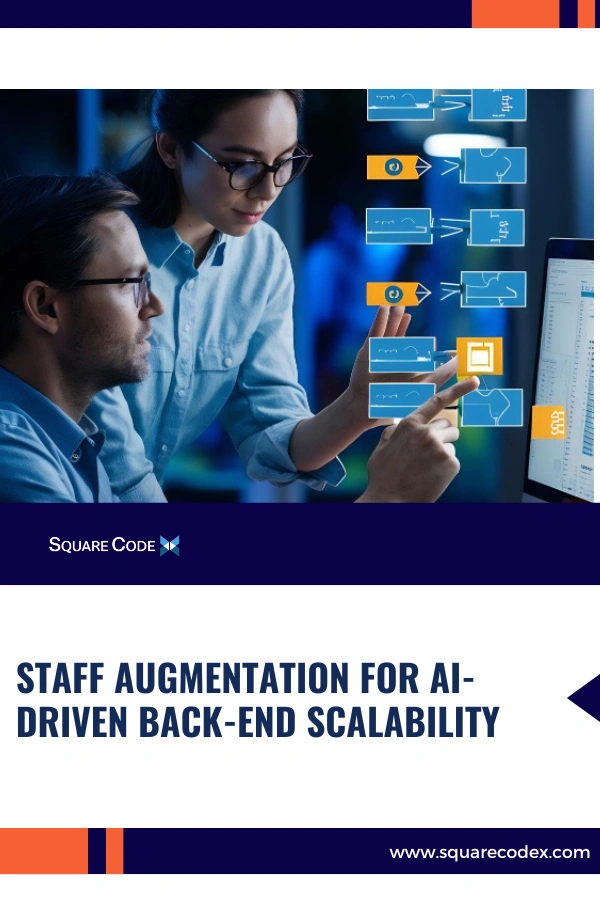Back-end developers optimizing AI-driven infrastructure
Meeting the Growing Demands of AI-Driven Infrastructure
As companies scale their artificial intelligence (AI) systems, one of the most complex challenges lies in managing the back-end architecture that supports them. AI-driven applications require vast data processing capabilities, high-performance servers, and scalable databases capable of handling continuous growth. For many organizations, internal teams alone cannot sustain this pace.
That is where Square Codex comes in. By providing nearshore staff augmentation services, Square Codex helps businesses strengthen their back-end development teams with skilled engineers who specialize in AI scalability, system optimization, and integration. These professionals allow companies to grow efficiently without the heavy costs or delays of traditional hiring.
Building a Back-End that Supports Continuous AI Learning
AI systems are dynamic by nature. Models evolve as they process more data, which places increasing pressure on the infrastructure behind them. Scalable APIs, distributed computing, and real-time data management become essential.
Through staff augmentation, Square Codex connects companies with back-end developers experienced in handling complex AI frameworks. These engineers understand how to design architectures that can expand smoothly as data and user demands increase. Whether it involves optimizing cloud-based systems or streamlining microservices, the goal is to keep performance stable while allowing room for AI growth.

Are you looking for developers?

Integrating AI Tools into Existing Systems
AI integration can be a technical challenge when organizations already rely on legacy systems. Back-end engineers from Square Codex bring the expertise needed to merge traditional infrastructures with modern AI components, ensuring compatibility and security.
This approach minimizes disruptions and accelerates deployment timelines. It also ensures that the AI’s computational requirements are met through optimized data pipelines, load balancing, and efficient resource allocation. By leveraging nearshore teams that share time zones and communication styles, companies can manage these integrations faster and with greater precision.
Nearshore Collaboration for Seamless Back-End Operations
AI projects thrive when technical alignment and real-time communication exist between teams. Square Codex provides nearshore engineers from Costa Rica and Latin America who integrate directly into U.S. teams, reducing communication gaps while maintaining productivity.
This collaborative model allows for rapid iteration, continuous testing, and adaptive infrastructure scaling—all key elements for AI-driven platforms. Businesses benefit from real-time feedback, quicker problem-solving, and ongoing optimization without the timezone or cultural barriers common in offshore arrangements.
Are you looking for developers?
Achieving Scalable AI Infrastructure with Square Codex
Scalability is not just about adding more servers or data storage—it is about creating systems that intelligently adapt to demand. Square Codex’s augmented engineers use AI-enhanced monitoring and automation tools to anticipate bottlenecks before they occur.
By balancing flexibility, reliability, and cost-efficiency, companies can focus on innovation instead of operational hurdles. From API design to database tuning, every component of the back-end is engineered for long-term scalability, ensuring that AI applications perform consistently under growing workloads.
The Smart Way to Scale with Square Codex
AI development requires not just intelligence in algorithms but intelligence in infrastructure. Through nearshore staff augmentation, Square Codex provides companies with immediate access to skilled professionals who understand both.
With a focus on back-end scalability, system efficiency, and AI-driven performance, Square Codex ensures that your architecture grows as fast as your ambitions. By integrating the right people, tools, and processes, companies can achieve a seamless balance between innovation and reliability.
